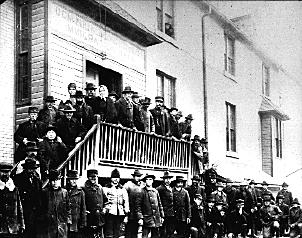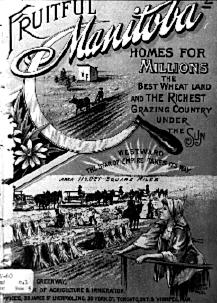The Forks and Immigration: 1870-1920
The Forks National Historic Site
Because it was a major railway centre, it is easy to imagine that many of those who immigrated to the Canadian West came through The Forks. However, its role in immigration starts even before the arrival of the railway in Manitoba. Just after Manitoba became part of Canada in 1870, many came to Winnipeg by river boat and train connections through the northern United States. In 1872, the Canadian government built two immigration sheds at The Forks, each of which could accommodate 500 people.
Shortly afterwards, a shanty-town called 'the flats' took form at the north-west corner of The Forks, and housed a large portion of the city's destitute immigrants. The flats were home to as many as 2,000 people. The area was washed away during the 1882 flood but the shanties were quickly replaced.

© National Archives of Canada / PA-122676
Immigration was not just from Eastern Canada. The Canadian government invested vast resources in attracting people from Eastern and Western Europe, as well as the United States. Interestingly, not one of the pamphlets designed to bring people here mentions the weather. Canadian winters were called 'brisk' and 'invigorating', but never simply cold. The prospect of cheap and abundant land brought people by the thousands from across the world, despite the hardships endured to get here.
The immigrants who entered Western Canada through The Forks changed the nature of the city and the country. The evidence of the physical changes we see at The Forks are representative of the shifts in Canadian history that have profoundly impacted all of her citizens.

© Provincial Archives of Manitoba
- Date modified :